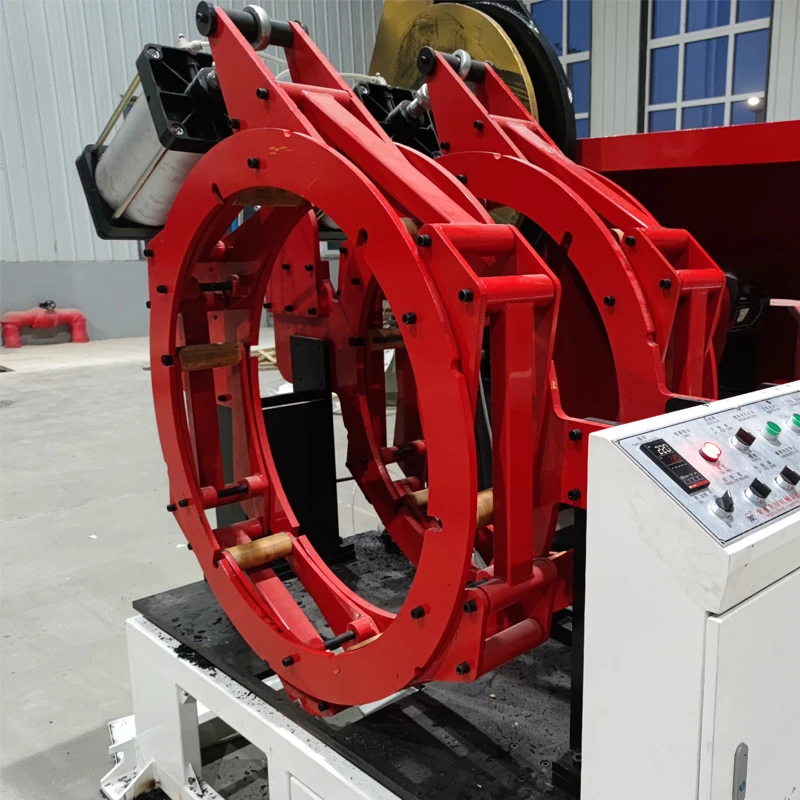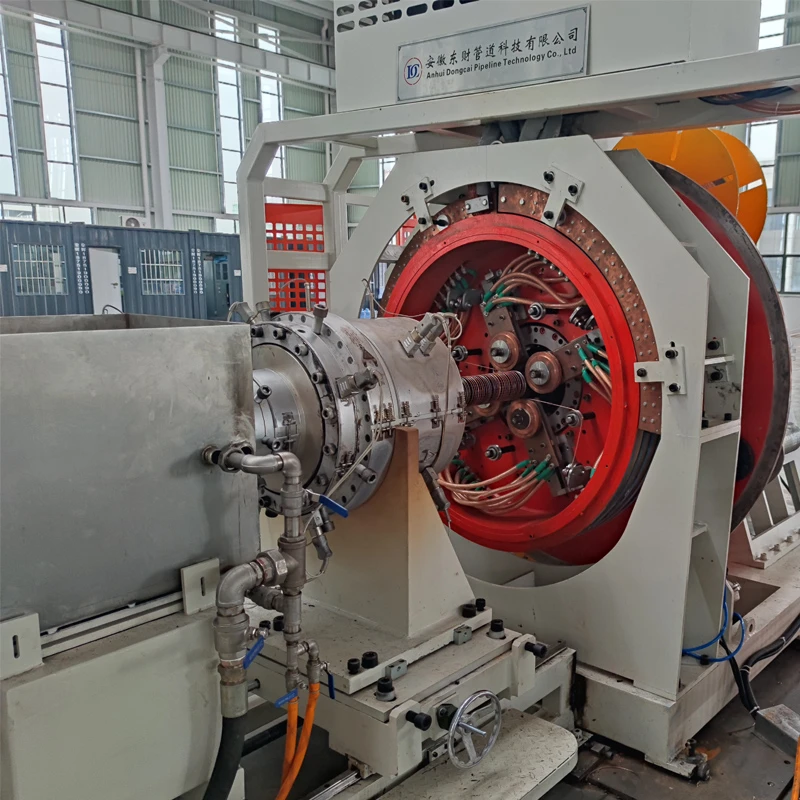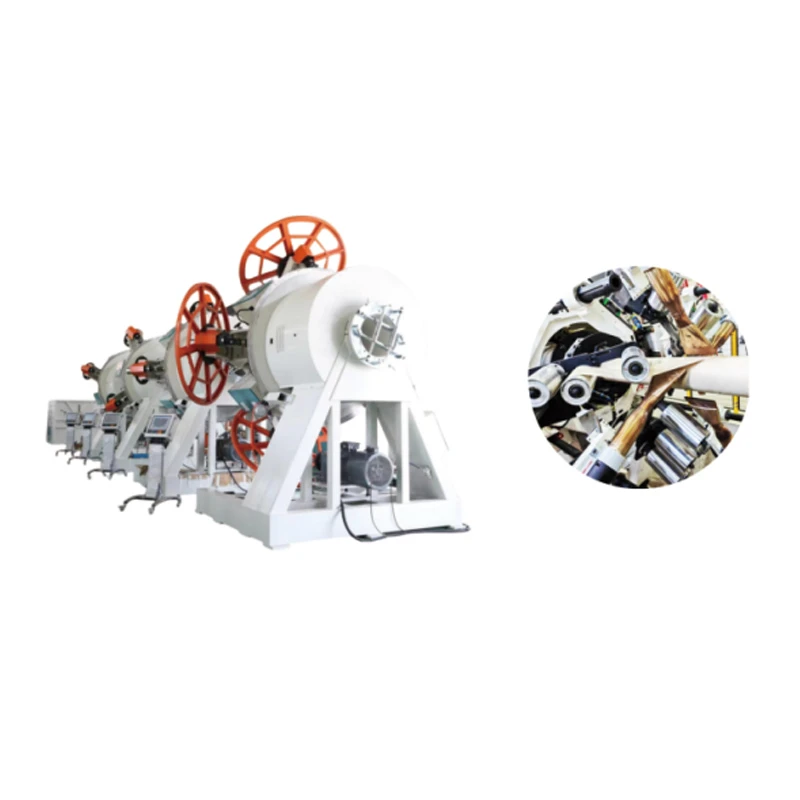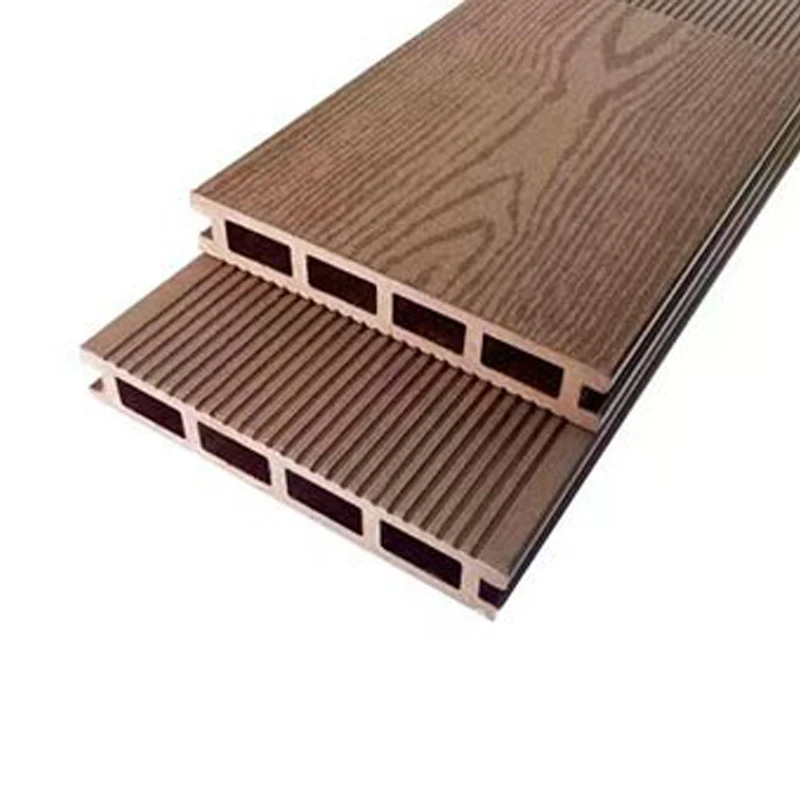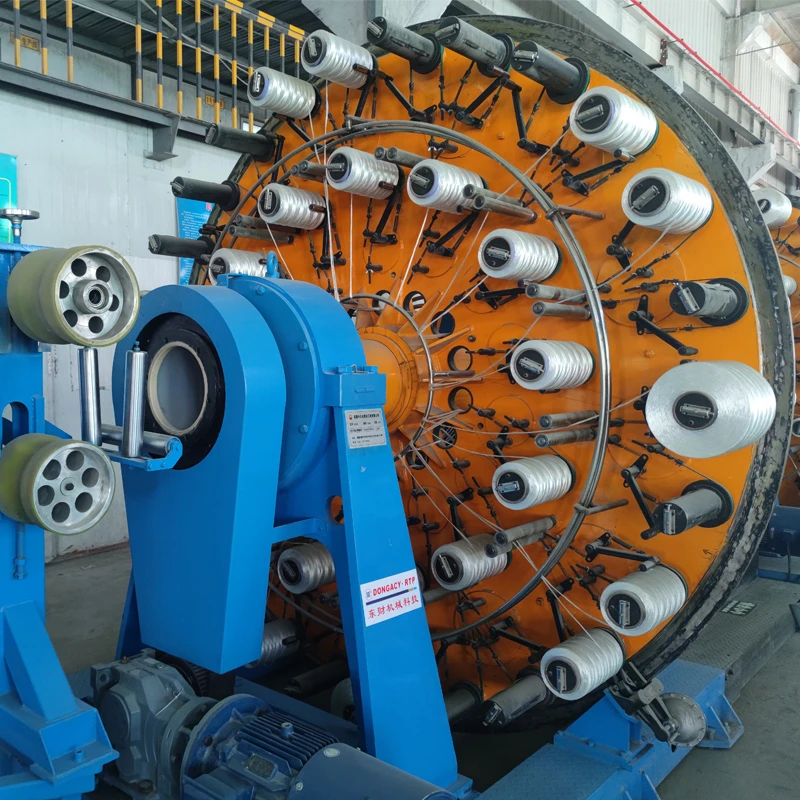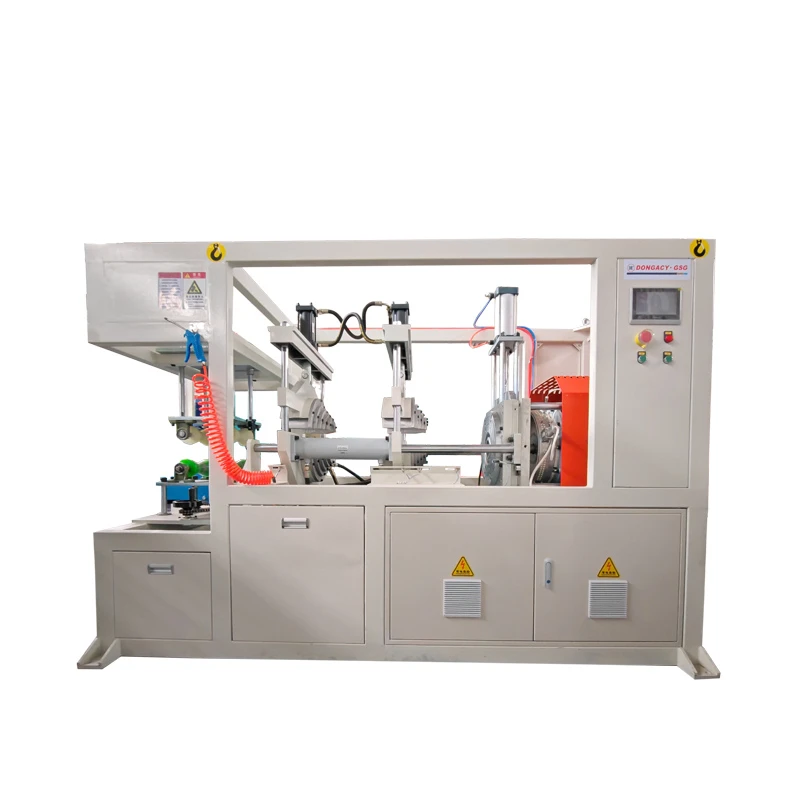
The Evolution and Impact of Tube Production Lines in Modern Industry
In the panorama of contemporary industrial manufacturing, the tube production line stands as a cornerstone technology, underpinning the infrastructure of countless global sectors. From critical fluid conveyance systems in petrochemical complexes to the intricate frameworks of medical devices, the ability to efficiently and precisely produce various types of tubes and pipes is paramount. This article delves into the sophisticated world of modern tube manufacturing, exploring its critical role, the technological advancements that define its current state, and the future trajectory of this indispensable industry. We will navigate through the complexities of material science, fabrication methodologies, and stringent quality control protocols that collectively ensure the integrity and longevity of these essential components. The demand for enhanced performance, energy efficiency, and environmental sustainability has driven continuous innovation in tube manufacturing, pushing the boundaries of what is achievable in terms of speed, accuracy, and material diversity. Furthermore, the burgeoning requirements across diverse applications, including high-pressure gas lines, robust structural elements, and sterile conduits for pharmaceutical applications, necessitate a profound understanding of specialized tube production lines. This introductory exploration aims to provide a comprehensive overview for B2B decision-makers and technical professionals seeking to understand the foundational principles, emerging trends, and strategic considerations involved in investing in or optimizing their tube production capabilities. The focus will extend beyond mere production capacity to encompass the intrinsic value of quality, compliance with international standards such as ISO and ANSI, and the long-term operational advantages derived from state-of-the-art systems. Understanding the nuanced interplay between raw material properties, sophisticated processing equipment, and rigorous testing regimes is crucial for achieving superior product outcomes. The drive towards automation, real-time monitoring, and predictive maintenance within these production environments signifies a paradigm shift towards Industry 4.0 principles, ensuring not only higher throughput but also unparalleled reliability and cost-efficiency. This holistic perspective will demonstrate why a meticulously engineered and expertly managed tube production line is not just an asset, but a strategic imperative for businesses striving for excellence and competitive advantage in a globally interconnected marketplace. We will uncover how specific technologies, such as advanced extrusion techniques for polymers or sophisticated rolling and welding processes for metals, contribute to the versatility and robustness required by various industries. The discussion will also touch upon the economic implications of adopting high-speed, precision-engineered lines, emphasizing return on investment through reduced waste, optimized energy consumption, and superior end-product quality, which collectively contribute to the overarching goal of sustainable industrial development.
Comprehensive Manufacturing Process for Advanced Tube Production
The manufacturing process within a modern tube production line is a marvel of engineering precision, integrating several complex stages to transform raw materials into finished tubular products with exacting specifications. This intricate journey typically commences with raw material preparation, where bulk materials—be it steel coils for welded pipes, billets for seamless pipes, or polymer pellets for extruded tubes—are meticulously prepared. For metallic tubes, processes like pickling to remove scale, or slitting for coil preparation, are crucial preparatory steps. In the context of polymer pipes, such as those produced by a High Speed Extrusion Production Line For Pe Pp-r/pp-rt/pp-b Pipes, the initial phase involves precise material handling and feeding, ensuring consistent supply of virgin resin, color masterbatch, and necessary additives (e.g., UV stabilizers, antioxidants, impact modifiers) into the extruder’s hopper. Extrusion, a fundamental manufacturing process for polymer pipes, involves melting and forcing the polymer through a die to form a continuous profile. This continuous process involves a high-performance extruder, often with a specialized screw design (e.g., barrier screw) to ensure excellent plasticization and homogenization of the melt. The molten material then enters a precisely engineered die head, which dictates the external diameter and wall thickness of the pipe. Die design is critical for achieving uniform melt flow, preventing material degradation, and ensuring dimensional stability. Following extrusion, the pipe enters a vacuum calibration tank where it is cooled and sized under vacuum pressure, ensuring accurate dimensions and roundness. This is a critical step for products requiring tight tolerances, such as medical tubing or precision fluid lines. Subsequently, the pipe undergoes further cooling in a spray cooling tank, maintaining its structural integrity. For certain applications, an online annealing or tempering process might be integrated to enhance material properties like flexibility or strength. The next critical stage is the haul-off unit, which provides a constant pulling force to draw the pipe through the cooling and sizing stations at a controlled speed, directly influencing the final dimensions and production output. High-precision servo motors are often employed in modern haul-off units to ensure synchronous and stable operation. Finally, a cutting unit, typically a non-chip or planetary cutter for polymer pipes, precisely cuts the continuous pipe into predetermined lengths. For large diameter pipes, automatic stacking or belling machines might be integrated at the end of the line, while smaller pipes may be coiled. Throughout this entire sequence, robust inspection standards such as ISO (e.g., ISO 4427 for PE pipes, ISO 15874 for PP-R pipes) and ANSI (for specific pressure applications) are rigorously applied. Non-destructive testing (NDT) methods like ultrasonic testing for wall thickness and concentricity, hydrostatic pressure testing for leak integrity, and visual inspection are routinely performed to ensure zero-defect output. The selection of materials, whether advanced thermoplastics (PE, PP-R, PP-RT) or specific grades of steel, directly influences the product’s use-life, which can range from 50 years for underground water pipes to highly specific short-term applications for medical devices. These lines find extensive application in diverse sectors, including petrochemicals, where corrosion resistance is paramount; metallurgy, for high-strength conduits; and critical infrastructure like water supply and drainage systems, where longevity and reliability are key. The advantages in typical application scenarios are manifold: modern tube production lines significantly enhance energy efficiency through optimized heating zones and highly efficient motors, reduce material waste via precise control systems, and offer superior corrosion resistance and abrasion resistance depending on the material and intended use, leading to substantial long-term operational cost savings and environmental benefits.
Technical Parameters and Product Specifications of Advanced Tube Production Lines
Understanding the technical parameters of a tube production line is crucial for evaluating its suitability for specific industrial requirements and for forecasting operational efficiency and return on investment. These parameters dictate the line's capabilities in terms of throughput, product dimensions, material versatility, and energy consumption. For instance, the High Speed Extrusion Production Line For Pe Pp-r/pp-rt/pp-b Pipes represents a pinnacle in polymer pipe manufacturing, designed to deliver exceptional speed and precision for a range of thermoplastic materials. Key specifications for such a line typically include the pipe diameter range, which can span from small bore (e.g., 16mm) up to large diameter pipes (e.g., 630mm or more), and the maximum wall thickness, which impacts the pipe's pressure rating and structural integrity. Production speed, measured in meters per minute (m/min), is a paramount indicator of the line's capacity, with high-speed lines achieving upwards of 30-50 m/min for smaller diameters. The type and power of the extruder, often a single-screw extruder for polymer pipes, is another critical parameter, typically ranging from 60mm to 150mm screw diameters with corresponding motor powers up to 200kW or more, influencing the melt capacity and plasticizing efficiency. Energy consumption, often specified in kW or kWh per kilogram of output, is a growing concern, driving manufacturers to integrate energy-efficient motors (e.g., IE3/IE4 standard) and advanced heating control systems. The number and capacity of cooling tanks, vacuum pumps, and the haul-off traction force are also essential, directly impacting the cooling efficiency, dimensional stability, and pull strength during the continuous process. Control systems, frequently utilizing advanced PLC (Programmable Logic Controller) technology with HMI (Human-Machine Interface) touchscreens, offer precise control over temperature zones, motor speeds, and line synchronization, enabling real-time monitoring and data logging for quality assurance. Beyond these general parameters, specialized lines, such as a seamless pipe production line or a steel pipe production line, would feature distinct technical characteristics tailored to their respective materials and forming processes, including rolling mill configurations, welding technologies (e.g., ERW, SAW, LSAW), heat treatment furnaces, and non-destructive testing (NDT) equipment like eddy current or ultrasonic flaw detectors. The table below provides a comparative overview of key parameters for typical tube production lines, offering a quantifiable basis for assessing capabilities and making informed procurement decisions, highlighting the critical distinctions that influence operational performance and product quality across different material types and applications. This detailed breakdown ensures that prospective buyers can align the line's technical capabilities with their specific production demands and long-term strategic objectives, accounting for factors like future scalability and material diversification.
| Parameter | High Speed PE/PP-R Extrusion Line (e.g., AHDC High Speed Line) | Steel Pipe Production Line (ERW) | Medical Tube Extrusion Line |
|---|---|---|---|
| Pipe Diameter Range (mm) | 16 - 630 | 20 - 406 (0.5 - 16 inch) | 0.5 - 20 (Micro-tubing to Catheter Tubing) |
| Typical Production Speed (m/min) | Up to 35 (for smaller diameters) | 50 - 120 (for smaller diameters) | 5 - 60 (precision depending) |
| Material Compatibility | PE, HDPE, PP-R, PP-RT, PP-B, ABS | Carbon Steel, Stainless Steel, Galvanized Steel | Medical Grade PVC, PU, Silicone, PEEK, PTFE, Nylon |
| Extruder/Mill Type | High Efficiency Single Screw Extruder (e.g., DC series) | Forming & Welding Mill (ERW, HF-Welding) | Precision Single Screw/Twin Screw Extruder |
| Motor Power (kW) | 75 - 250 (Main Extruder) | 150 - 600 (Main Drive) | 7.5 - 55 (Main Extruder) |
| Cooling System | Vacuum Calibration & Spray Cooling Tanks | Water Cooling (Internal & External) | Precise Water Bath/Air Cooling |
| Control System | PLC Control with HMI Touch Screen | Integrated PLC with AC Drive Systems | High-Precision PLC, PID Temperature Control |
| Typical Application | Water Supply, Drainage, Gas Distribution, Heating Systems | Structural, Fluid Transmission (Oil/Gas), Construction | Catheters, IV Tubing, Drainage Tubes, Peristaltic Pump Tubing |
Diverse Application Scenarios and Proven Success Stories of Tube Production Lines
The versatility of a modern tube production line is best illustrated by its pervasive presence across a myriad of industrial sectors, each leveraging specific attributes of the produced tubes to meet unique operational demands. In the critical infrastructure sector, for instance, high-density polyethylene (HDPE) pipes manufactured on a high-speed extrusion line are indispensable for municipal water supply and drainage systems. Their inherent corrosion resistance, flexibility, and long lifespan (often exceeding 50 years, as per industry standards like ASTM D3035) significantly reduce maintenance costs and environmental impact compared to traditional metallic pipes. An application example includes large-scale urban development projects where these pipes are used for extensive underground networks, providing reliable and leak-proof conduits for potable water or efficient sewerage disposal, with feedback from municipal engineering firms often highlighting reduced installation times due to their lightweight nature and ease of jointing through electrofusion or butt fusion. Similarly, in the oil and gas industry, steel pipe production lines, particularly those producing seamless pipes or large-diameter welded pipes (e.g., API 5L compliant), are fundamental for conveying crude oil, natural gas, and refined petroleum products across vast distances. The stringent requirements for high-pressure resistance, anti-corrosion properties (achieved through internal/external coatings), and robust mechanical strength in these pipelines necessitate advanced fabrication techniques like submerged arc welding (SAW) and comprehensive non-destructive testing, ensuring their integrity in harsh environments, from offshore platforms to desert pipelines, where even minute flaws can lead to catastrophic failures. Consider a real-world case where a major energy company replaced aging infrastructure with pipes from a new-generation ERW tube mill line, reporting a 20% increase in operational pressure tolerance and a significant decrease in scheduled maintenance due to improved material consistency. The medical industry, on the other hand, relies heavily on highly specialized medical tube extrusion line systems for producing precision tubing for catheters, IV lines, respiratory circuits, and laboratory instruments. Here, the paramount concerns are biocompatibility, sterilization compatibility, precise dimensional control (often with tolerances in micrometers), and material purity. Manufacturers adhere to rigorous standards like ISO 13485 and FDA regulations, utilizing medical-grade polymers (e.g., PEEK, silicone, PVC, polyurethane) and employing cleanroom environments to prevent contamination. A compelling example involves a device manufacturer developing next-generation minimally invasive surgical tools that required multi-lumen tubing with precise internal geometries, which was only achievable through a custom-designed, ultra-precision extrusion line featuring closed-loop control and online vision inspection systems. Beyond these, the automotive sector utilizes smaller diameter precision tubes for fuel lines and brake lines, while the HVAC industry employs copper or aluminum tubes for refrigeration and air conditioning. Each application underscores the adaptability and technical depth of modern tube manufacturing, demonstrating how customized solutions from a sophisticated tube production line can directly contribute to enhanced product performance, increased safety, and substantial operational efficiencies across diverse industrial landscapes. The ability to produce pipes that are not only dimensionally accurate but also possess specific functional properties like flame retardancy, chemical resistance, or extreme temperature tolerance further broadens their utility.
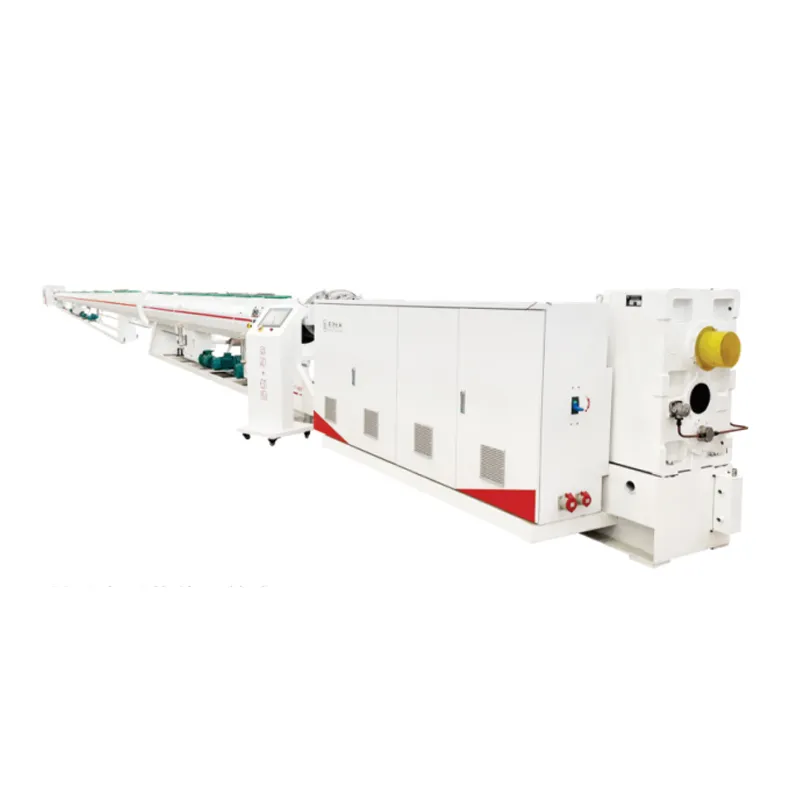
Figure 1: High-Speed Extrusion Production Line for PE/PP-R Pipes demonstrating advanced manufacturing capabilities.
Technological Advantages and Innovations Driving Modern Tube Production
The competitive landscape of tube manufacturing is increasingly defined by the integration of advanced technologies and innovative engineering, pushing the boundaries of what a tube production line can achieve in terms of efficiency, precision, and sustainability. One significant advantage stems from enhanced automation and digital control systems. Modern lines are equipped with sophisticated PLC (Programmable Logic Controller) systems integrated with SCADA (Supervisory Control and Data Acquisition) or HMI (Human-Machine Interface) touchscreens, offering operators real-time data acquisition, precise parameter adjustments, and diagnostic capabilities. This level of control minimizes human error, optimizes energy consumption by dynamically adjusting heating zones and motor speeds, and ensures consistent product quality by maintaining tight tolerances. For instance, in polymer extrusion lines, gravimetric dosing systems are increasingly common, ensuring highly accurate material blending and feeding, which directly translates to consistent pipe weight per meter and reduced material waste, a crucial factor in minimizing operational costs and maximizing profitability. Another critical innovation is the development of advanced die head designs and calibration technologies. For extruded pipes, specialized spiral or basket dies promote homogeneous melt distribution and eliminate weld lines, enhancing the structural integrity and surface finish of the final product. Vacuum calibration tanks now incorporate multi-chamber designs and precise water temperature control to ensure optimal cooling and sizing, even at high production speeds. For metal tube mill lines, advancements in forming rolls and high-frequency induction welding (HFIW) technologies have dramatically improved welding quality and speed, leading to stronger, more uniform seams and higher throughput. Furthermore, the integration of inline inspection and quality control systems represents a paradigm shift. Non-destructive testing (NDT) methods like ultrasonic flaw detection, eddy current testing for surface defects, and X-ray fluorescence (XRF) for material composition verification are often embedded within the production line. These systems provide immediate feedback, allowing for prompt corrective actions and significantly reducing the production of off-spec material. For the High Speed Extrusion Production Line For Pe Pp-r/pp-rt/pp-b Pipes, for example, online ultrasonic thickness gauges and concentricity monitors ensure that every millimeter of pipe meets the required specifications, and automatic reject systems remove non-conforming products without operator intervention. The focus on energy efficiency is also paramount. Many contemporary tube production lines feature high-efficiency motors (e.g., IE4 standard) and intelligent energy management systems that recover heat or optimize power consumption, contributing to lower operational expenditures and a reduced carbon footprint, aligning with global sustainability initiatives. The ability to rapidly switch between different product sizes or materials with minimal downtime is another competitive advantage, achieved through modular designs and quick-change tooling systems. This flexibility is particularly valuable in markets requiring diverse product portfolios or shorter production runs. Overall, these technological advancements not only enhance the quantitative output of a tube production line but also elevate the qualitative aspects of the manufactured tubes, ensuring they meet the increasingly stringent performance and reliability demands of modern industries while simultaneously reducing operational costs and environmental impact, making them a wise long-term investment.
Selecting the Right Manufacturer and Tailoring Custom Tube Production Solutions
The decision to invest in a new tube production line is a significant capital expenditure that demands meticulous evaluation of potential manufacturers and their capabilities, alongside a clear understanding of the need for customized solutions to meet specific operational requirements. When selecting a manufacturer, expertise and experience are paramount. Look for companies with a long-standing track record in the industry, evidenced by years of service, a diverse portfolio of successful installations globally, and a strong reputation for innovation and reliability. A reputable manufacturer will possess deep engineering knowledge, capable of designing not just standard lines but also highly specialized setups, such as a precision medical tube extrusion line that adheres to FDA and ISO 13485 standards, or a heavy-duty seamless pipe production line for high-pressure applications. Authoritativeness can be gauged by industry certifications (e.g., ISO 9001 for quality management, CE marking for European markets), collaborations with leading technology partners, and membership in relevant industry associations. Visiting existing client sites or requesting performance data and client testimonials can provide valuable insights into real-world operational efficiency and customer satisfaction. Beyond standard offerings, the ability to provide customized solutions is a critical differentiator. Every production environment has unique constraints and objectives, whether it's limited factory floor space, specific material processing challenges, or the need for integration with existing upstream or downstream equipment. A forward-thinking manufacturer will engage in a detailed consultation process, analyzing production goals, material characteristics, desired output specifications, and budget considerations to design a tailor-made tube production line. This might involve modifications to extruder screw designs for specific polymer blends, integration of advanced cutting or coiling solutions for unique product lengths or packaging, or incorporation of specialized heating and cooling zones to accommodate novel materials. For example, a client requiring specific anti-corrosion properties for pipes used in a chemical plant might necessitate a line with advanced co-extrusion capabilities for a protective inner layer, or an integrated surface treatment unit. The manufacturer's after-sales support and service network are equally crucial. Enquire about installation and commissioning services, operator training programs, availability of spare parts, and response times for technical support and troubleshooting. A robust service commitment ensures maximum uptime and longevity of the investment. Furthermore, consider the manufacturer's commitment to research and development. Companies that continually invest in R&D are more likely to offer cutting-edge technologies that improve energy efficiency, reduce material waste, and enhance product quality, thus ensuring the purchased line remains competitive over its lifespan. Engaging in a comprehensive vendor comparison, which includes technical specifications, pricing models, warranty terms, and projected total cost of ownership, will facilitate an informed decision that aligns with long-term business objectives and ensures a successful, high-performing tube manufacturing operation. This strategic approach mitigates risks and optimizes the return on a substantial investment, setting the foundation for sustained operational excellence and market leadership.
Ensuring Trustworthiness: FAQs, Delivery, Warranty, and Support for Your Tube Production Line
Establishing trust with a potential supplier of a tube production line extends beyond technical specifications and past successes; it encompasses transparent communication regarding frequently asked questions, clear delivery protocols, comprehensive warranty provisions, and reliable post-sales support. This section addresses key areas that build confidence and assure buyers of a long-term, mutually beneficial partnership. Common inquiries from B2B clients often revolve around customization options: "Can the line produce multi-layer pipes?" or "Is the system compatible with recycled materials?" A trustworthy manufacturer will offer flexible solutions and provide detailed technical explanations for any customization. Another frequent question pertains to operational costs, specifically "What is the typical energy consumption per ton of output?" or "How often is routine maintenance required, and what are the associated costs?" Suppliers should be prepared to provide precise data based on similar installations and offer maintenance schedules. Regarding delivery, the typical lead time for a standard tube production line can range from 90 to 180 days, depending on the complexity and customization level, while highly specialized lines, such as a bespoke medical tube extrusion line, might require longer, up to 240 days. This timeline usually includes design, component procurement, manufacturing, assembly, factory acceptance testing (FAT), and preparation for shipment. Reputable manufacturers will provide a detailed project schedule with milestones for client review and approval. Shipping logistics, including packaging standards (e.g., seaworthy packing, anti-corrosion measures for overseas transit) and preferred incoterms (e.g., FOB, CIF, DDP), should be clearly outlined in the quotation. Warranty commitments are a cornerstone of trustworthiness. A standard warranty for a new tube production line typically ranges from 12 to 24 months from the date of commissioning or 18 to 30 months from shipment, whichever comes first. This warranty should cover defects in materials and workmanship, with a clear process for reporting issues and obtaining replacements or repairs. Beyond the standard warranty, enquire about extended warranty options or service contracts that provide ongoing preventive maintenance and priority support. Post-sales support is critical for ensuring continuous operation and maximizing the lifespan of the equipment. This typically includes comprehensive onsite installation and commissioning services by factory-trained engineers, followed by extensive operator training. This training covers not only the fundamental operation of the line but also troubleshooting common issues, routine maintenance procedures, and safety protocols. Access to readily available spare parts is crucial; inquire about recommended spare parts lists for initial purchase and the lead time for critical components. Technical support should be accessible through multiple channels, including dedicated phone lines, email, and potentially remote diagnostics via internet connectivity for rapid problem resolution. Some manufacturers offer annual service visits or performance optimization consultations to help clients fine-tune their operations. A strong commitment to these aspects demonstrates a manufacturer's confidence in their product and their dedication to fostering long-term client relationships, instilling the necessary trust for a significant industrial investment.
The Future Trajectory of Tube Production and Concluding Perspectives
The future of the tube production line is poised for continuous evolution, driven by the relentless pursuit of higher efficiency, enhanced sustainability, and greater integration with advanced manufacturing paradigms like Industry 4.0. Emerging trends indicate a significant shift towards "smart" production lines, characterized by extensive sensor integration, real-time data analytics, and machine learning algorithms that enable predictive maintenance, autonomous process optimization, and intelligent quality control. This proactive approach to manufacturing not only minimizes downtime and reduces operational costs but also ensures consistent, superior product quality that responds dynamically to changing raw material properties or environmental conditions. For instance, advanced machine vision systems with artificial intelligence capabilities are becoming more prevalent, capable of detecting minute surface defects or dimensional deviations at high speeds, far beyond human visual acuity, ensuring zero-defect output for critical applications like a seamless pipe production line. Furthermore, the industry is witnessing a growing emphasis on sustainable manufacturing practices. This includes the development of extrusion lines capable of processing a wider range of recycled materials without compromising end-product performance, as well as innovations in energy recovery systems and more efficient heating and cooling technologies that significantly reduce the carbon footprint of production. The adoption of alternative energy sources and closed-loop water systems within the factory is also becoming a key differentiator for environmentally conscious manufacturers. The demand for multi-material and composite tubing is also on the rise, particularly in specialized fields such as aerospace, medical implants, and advanced construction. This necessitates the development of more sophisticated co-extrusion and multi-layer forming technologies within the tube production line, allowing for tailored properties such as enhanced barrier resistance, specific thermal conductivity, or superior strength-to-weight ratios. The medical sector, in particular, continues to push boundaries, demanding ever smaller, more complex geometries and biocompatible materials for groundbreaking medical devices, driving innovation in micro-extrusion and post-processing techniques. In conclusion, the modern tube production landscape is a dynamic ecosystem of technological innovation, precise engineering, and strategic adaptation. Investing in a state-of-the-art tube production line is not merely an acquisition of machinery; it is an investment in a highly advanced, integrated manufacturing solution capable of delivering superior products, optimizing operational efficiencies, and ensuring long-term competitiveness in a globalized market. The emphasis on high-speed capabilities, comprehensive quality control, energy efficiency, and customization options positions advanced tube production lines as essential assets for industries across the spectrum, from large-scale infrastructure projects to intricate medical device manufacturing. As industries continue to evolve, the future of tube production will undoubtedly be characterized by even greater automation, intelligence, and environmental stewardship, solidifying its role as a linchpin of industrial progress. The integration of advanced robotics for material handling and post-processing, as well as additive manufacturing techniques for highly complex or prototype tube designs, represents additional frontiers that promise to reshape the capabilities of tube manufacturing.
References and Further Reading:
- For detailed technical specifications and industry standards on PE pipe production, consult resources from the Plastics Pipe Institute (PPI): https://plasticpipe.org/
- Insights into steel pipe manufacturing and API standards can be found via the American Petroleum Institute (API) or related metallurgical journals: https://www.api.org/
- For advanced extrusion technologies and polymer engineering, academic journals like "Polymer Engineering & Science" provide valuable research: https://onlinelibrary.wiley.com/journal/15482635
- Information on medical device manufacturing standards (e.g., ISO 13485) and regulations can be found on regulatory body websites such as the FDA or BSI: https://www.fda.gov/
-
Innovative Solutions in PVC Pipe Production LineNewsJul.18,2025
-
Innovative Solutions in Pipe Extrusion Production LineNewsJul.18,2025
-
Advanced Plastic Profile Extrusion SolutionsNewsJul.18,2025
-
PVC Profiles: The Future of Durable and Cost-Effective Construction SolutionsNewsJun.06,2025
-
PVC Pipe Extrusion LineNewsJun.06,2025
-
High-Quality Polyethylene Pipe Production LineNewsJun.06,2025
-
High-Performance Tube Production LineNewsJun.06,2025

